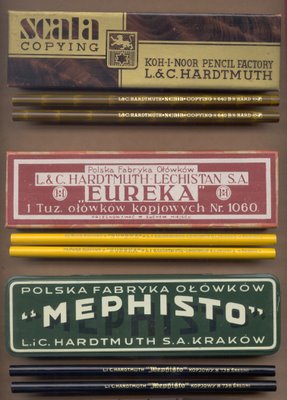
I am pleased to announce that we have received just in time for the holidays our new Palomino Blackwing Special Edition Gift Set, now available exclusively on Pencils.com. This is a beautiful new desktop set which includes a gorgeous natural wood grain box with the Palomino Blackwing brand embossed in a black leather trim, 24 Palomino Blackwing pencils and one of our KUM-Palomino Long Point sharpeners. At this point we have had just 200 of these box sets produced for the 2010 Holidays. 50 of these have been pre-reserved for our own internal company gift needs. This means there are just 150 sets available for sale in this Special Edition. At our normal Pencils.com margins this product represents a $130 value, however we have elected to offer this price at a price just under $100 per set in support of our loyal Palomino Blackwing fans.The box itself is an absolute gem produced in the Alsace Region of France featuring true artisan craftsmanship in the integration of the arts of woodworking and the production of fine quality CUIR de TERRE leather by our supplier Atelier de la Forêt. The Alsace is known as a land of winemakers & tanners and for the Vosages foothills, rivers and forests. The region is known for its environmentally friendly and sustainable method of selective harvest of the forest down to the individual tree level and for it’s craft woodworking. In former times the Alsace had a thriving tanning industry and today the names of streets, neighborhoods, families and business bear witness to this rich past. The family business owners of Atelier de la Forêt, located near the village of Zittersheim, continue these long held traditions of fine quality craftsmanship.The wood species used in this box is Sorbus Torminalis and is known commonly as the Wild Service Tree. Not knowing much about this particular species I took some time recently to investigate. Amazingly I found the interesting blog, Rowans, Whitbeams & Service Trees, maintained by Dr. Patrick Roper in the UK. Patrick is apparently a specialist in this group of trees and posts specifically about their history, use and preservation. One of the most interesting uses has been that of fermenting the berry’s for various beers as a substitute for hops and other alcoholic and non-alcoholic beverages alike. The tree was even known to Martin Luther for these qualities. The blog also pro vided this helpful link addressing the the genetic conservation and use of this species.The leather trim on this box is just one fine example of the beautiful leather desk accessories produced by Atelier de la Foret and it is my hope we can collaborate on further special editions within the Palomino and Palomino Blackwing family of products in the future. The company’s marketing literature on their fine leather work is as poetic as the words that can be written with the Palomino Blackwings themselves.
vided this helpful link addressing the the genetic conservation and use of this species.The leather trim on this box is just one fine example of the beautiful leather desk accessories produced by Atelier de la Foret and it is my hope we can collaborate on further special editions within the Palomino and Palomino Blackwing family of products in the future. The company’s marketing literature on their fine leather work is as poetic as the words that can be written with the Palomino Blackwings themselves.
Selecting a great leather is like choosing a great wine… The CUIR de TERRE leather comes from the finest calf-skin and it is transformed by formulae written down in notebooks and loving guarded, in a place, a land, a knowledge that has been passed down in secret, within the family. … the skins delicately catch the light for the pleasure of sight and touch, reminiscent of a sturdy old Armagnac or an aged Port.With this beautiful new gift set we bring together a truly global combination of fine quality craftsmanship of several companies, high quality raw materials and several countries.. The Blackwing pencils start with our superior quality Japanese produced graphite core so paramount to the writing pleasure are then incased in our Genuine Incense Cedar wood from the forests of California, transformed into high quality wood slats in our Tianjin, China factory before final pencil production by our Japanese woodworking and finishing partners. These are paired with the finest German produced carbon steel blade hand sharpeners from KUM. All packaged lovingly in a true work of art from France.




